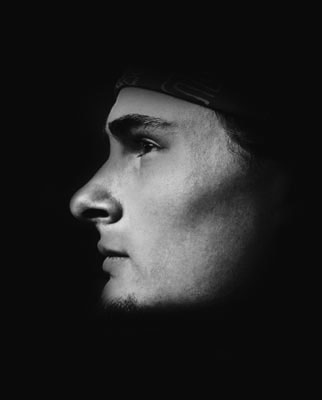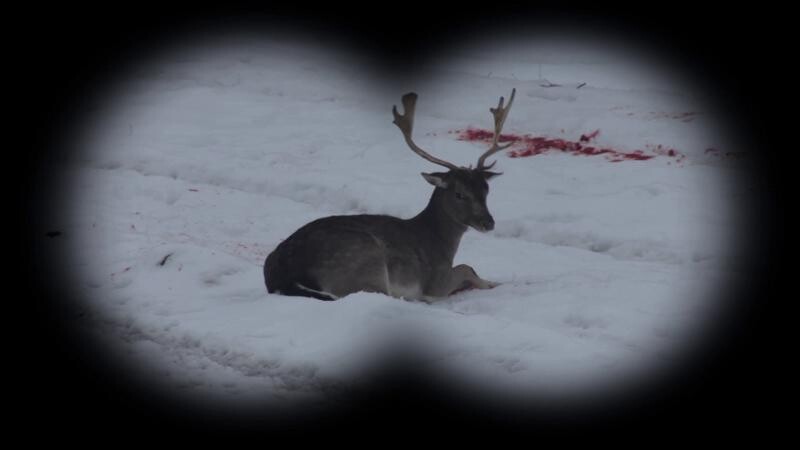An Oasis Amidst Concrete Gray
Jiří Stejskal when he was twenty-three years old went to the Ukraine to shoot the story of a family that was struggling with the local juggernaut and was trying to win a property dispute. One visit with the aim of shooting a short film, eventually, turned into an observational documentary which maps out the six year battle that the determined Natasha wages for her pit-hole and honour.
How did you first learn about Natasha’s family property-case?
I heard about them for the first time while studying in Estonia. My classmate has family in one of the high-rises, right in the location where we filmed later. She showed me pictures of a half ramshackle house with a large garden, an open-air museum amidst concrete buildings. We told ourselves that we would go there to have a look and find out how it’s possible that someone is living there and who that someone is. We successfully applied for a grant to shoot a short film and could travel to Ukraine.
What was your first meeting with the family like?
During the first visit we were limited in time, because the grant was able to cover only a one way journey. To break the ice, we arrived at their door with a bottle, but we erred because alcohol is not tolerated in their home. Fortunately, even during the first visit there was a sense of mutual sympathy, even without my knowledge of Ukrainian.
At what point while shooting did you realize that you were creating an observational documentary?
After the success of the short film, Pit-hole, we visited the family a couple of times and upon my return, people around me were always asking what was new and how it all would end in my opinion. At first, I was monitoring the family from a distance, but as soon as I got money to visit, which was in 2011, I began to realize that I was creating an observational documentary.
Just like your short film, Pit-hole, the feature documentary of the same name appears to be mainly some kind of evidence. What does Pit-hole mean to Natasha?
For sure it is crucial evidence, but not only the final product is important. I did not take on the role of just being a director behind the camera. When I turned it off I tried to be helpful. I accompanied Natasha to the court trial, which helped her because as soon as she introduced me as a journalist, she was treated with respect. It was also important that the case receive media coverage, so I contacted a few friends who helped draw attention to it. Of course, for Natasha it is proof of problems at the place where they live and if something happens, it will not be possible to make the problems disappear.
Can Natasha win the battle? Do you not think she wants too much for the pit-hole?
It is the battle of David and Goliath, which she cannot win. It all depends on how resourceful she will be, how long she is able to swim in the system and delay the situation. Personally, I do not think she is doing anything wrong. It isn’t her goal to retaliate against someone, she only wants for people to treat her nice and look her in the eye. She refuses to accept that someone is asking her to leave her property without the right to adequate compensation.
How will the revolution in Ukraine affect Natasha’s case? Did you consider playing out this topic in the documentary?
Now no one will deal with property cases. The focal point of interest after the revolution is Russia. Developers will stop applying pressure, because the situation is not suitable for investing in building projects. Natasha will gain some time, which is a win for her. The last time I visited Natasha was before the revolution, but I think you can get a feeling of the hopelessness of a nation, which is on the brink of a revolution.
Do you want to return to the documentary in the future and follow the stories of families during and after the “crisis in Ukraine’’?
Of course I would like to continue filming, but it will all depend on whether there is an interest in the film. In the case of a follow-up, we are considering a slightly different method of distribution. I would like to create a series which could be viewed on the internet.
How do you think the audience will approach the battle for the pit-hole and what does the pit-hole mean to you?
Some will look at them the same way as some people from the nearby apartment buildings, like at beggars and the pit-hole will be viewed as a place that should be flooded by concrete. Perhaps, if they were fighting for something visually nicer more people would stand up for them. For me the pit-hole is an oasis amidst concrete gray. It is a paradox that here we forcefully plant greenery into our cities, we glorify the housing development horror and in Ukraine they take a liking to it. They are making the same mistakes we made a few years ago.
|
|
Jiří Stejskal is an audiovisual, editing and sound graduate at the Tomas Bata University in Zlín. He later completed his studies with a degree in film directing from the University of Tallinn. He was the editor of Dodo Gombár’s film Smíchov Is Crying, Brooklyn Is Sleeping (Smíchov pláče, Brooklyn spí, 2011) and he was involved in documentaries of the Czech Television. Stejskal is also professionally involved with photography and the theatre. |
This interview was published full-length in Czech in the Jihlava IDFF newspapers, dok.revue F04.
Translated by Floriana Skorulska




